How does Fitbit Calculate Calories Burned Expert Review 2024
Unveiling the Science Behind Fitbit’s Calorie Calculation: A Deep Dive
How does Fitbit Calculate Calories Burned: Fitbit is a pioneer in fitness tracking, offering a wide range of wearable gadgets meant to measure a variety of health data. Calorie burn is one of the most important indicators for many users, as it helps with weight management, workout optimization, and overall health. But how does Fitbit, a small wrist-worn device, effectively estimate calories burned across a wide range of activities and physiological variables?
In this exclusive deep dive, we uncover the mysteries behind Fitbit’s calorie-calculating algorithms, digging into the intricate interplay of sensor data, human input, and scientific principles. From the foundational concept of Basal Metabolic Rate (BMR) to the advanced capabilities of heart rate tracking, we uncover the mechanisms that allow Fitbit to provide clients with individualized and precise calorie expenditure data. We also investigate the geography of user inputs, examining how factors such as food intake and hydration influence the calorie-calculating process.
However, the journey does not stop there. We also discuss the limitations and probable sources of mistakes in Fitbit’s calorie calculation. Users can acquire a better knowledge of the quality and reliability of their Fitbit data, allowing them to make more educated decisions about their health and fitness journeys.
Join us on an informative journey through the science underlying Fitbit’s calorie calculation, gaining a new understanding of the complexity and intricacies that make these devices such essential tools in our pursuit of greater health and wellness.
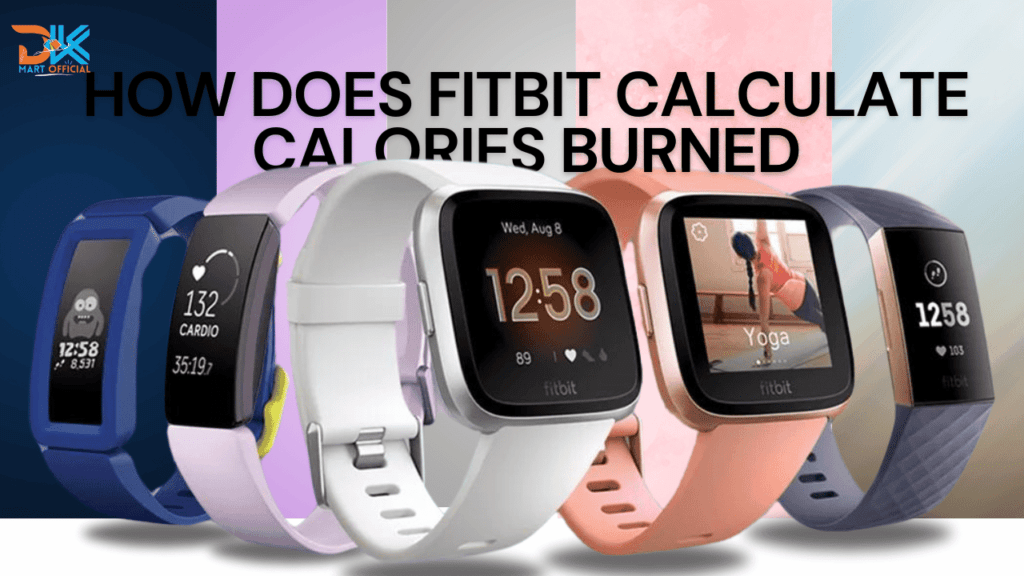
How does Fitbit Calculate Calories Burned: Basal Metabolic Rate
How does Fitbit Calculate Calories Burned: Fitbit calculates your BMR and your level of physical activity to deliver a more accurate calorie estimate. This entails tracking your motions using built-in sensors and distinguishing between moments of sedentary and active behavior. The information provided is then cross-referenced with your heart rate data, where relevant, to determine the intensity of your actions. Fitbit provides a more detailed view of your energy expenditure by combining these aspects, allowing you to make informed decisions about your physical activity and dietary goals.
Fitbit calculates your BMR and your activity level to deliver a more accurate calorie estimate. This entails tracking your motions using built-in sensors and distinguishing between periods of sedentary and active behavior. These details are then cross-referenced with your heart rate data, where relevant, to determine the intensity of your actions. Fitbit provides a more detailed view of your energy expenditure by combining these aspects, allowing you to make informed decisions about your exercise and dietary goals.

How does Fitbit Calculate Calories Burned: Activity Level
Understanding how Fitbit counts calories burnt entails evaluating the impact of your activity level. Fitbit devices go beyond just tracking steps, using accelerometers to detect subtle movements like sitting, standing, walking, or running. These smart devices measure the intensity and duration of each action, combining this information to produce a thorough estimate of the additional calories burned throughout the day.
In essence, Fitbit’s sophisticated approach resembles a tailored fitness companion. It not only recognizes your steps but also interprets the nuances of your motions, transforming them into useful data about your energy expenditure. This humanized feature demonstrates Fitbit’s commitment to providing a comprehensive picture of your daily activity, making it a vital tool for people looking to manage and maximize their health and wellness.

How does Fitbit Calculate Calories Burned: Heart Rate Monitoring
Fitbit devices stand out in the area of fitness tracking due to their heart rate monitoring capability, which provides an unequaled method of determining calorie burn. By seamlessly incorporating heart rate data, these gadgets go beyond the norm, recognizing that the heart’s rhythm is the key to determining the intensity of physical activity. Fitbit does more than just count steps; it creates a symphony of individual data, utilizing your heart rate to dynamically adjust calorie calculations.
This not only improves accuracy but also assures a personalized portrayal of the effort put into your unique activity. Fitbit’s focus on exploiting physiological data via heart rate monitoring transforms the landscape of calorie estimation, giving consumers a more nuanced understanding of their effort levels and encouraging a more individualized approach to fitness tracking.
In a world crowded with activity trackers, Fitbit’s devices stand out as true companions, providing not only stats but also a narrative of your body’s responses. The addition of heart rate monitoring demonstrates Fitbit’s commitment to precision. It acknowledges that the heart’s rhythm reveals a lot about how much energy is consumed throughout various activities. Fitbit turns this biological symphony into useful data by automatically modifying calorie calculations based on your physiological reactions. This revolutionary integration improves the user experience by upgrading Fitbit from a mere tracker to a personalized advisor, translating your heart’s language to deliver insights that are relevant to your fitness path.
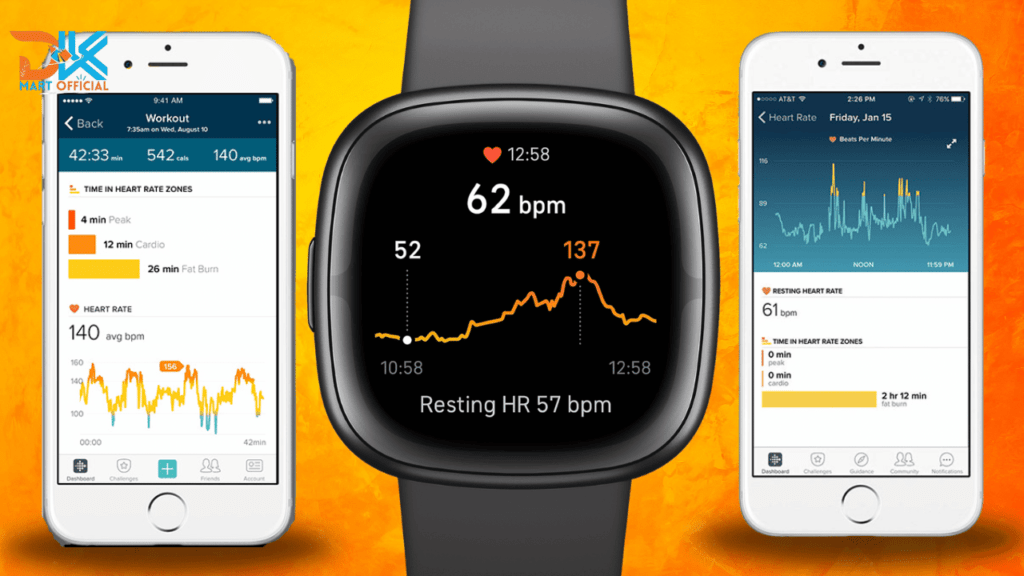
How does Fitbit Calculate Calories Burned: Sleep Tracking
Fitbit’s creativity goes above the norm by including the complexities of sleep in its calorie-tracking algorithms. Fitbit takes a holistic approach by adding heart rate and movement data during the night, measuring calories burned during this often-overlooked period. This new feature not only helps customers gain a thorough picture of their daily energy dynamics, but it also demonstrates Fitbit’s commitment to giving a nuanced depiction of their health. It recognizes that even while the body is at rest, it engages in modest but significant processes that affect the overall energy balance.
However, it is critical to understand the proportionality; the calories spent during sleep account for a small share of the total daily calculation. Fitbit’s addition of sleep-related calorie tracking demonstrates a dedication to completeness, unraveling the complexities of the 24-hour cycle to provide consumers with a more thorough understanding of their physical well-being.
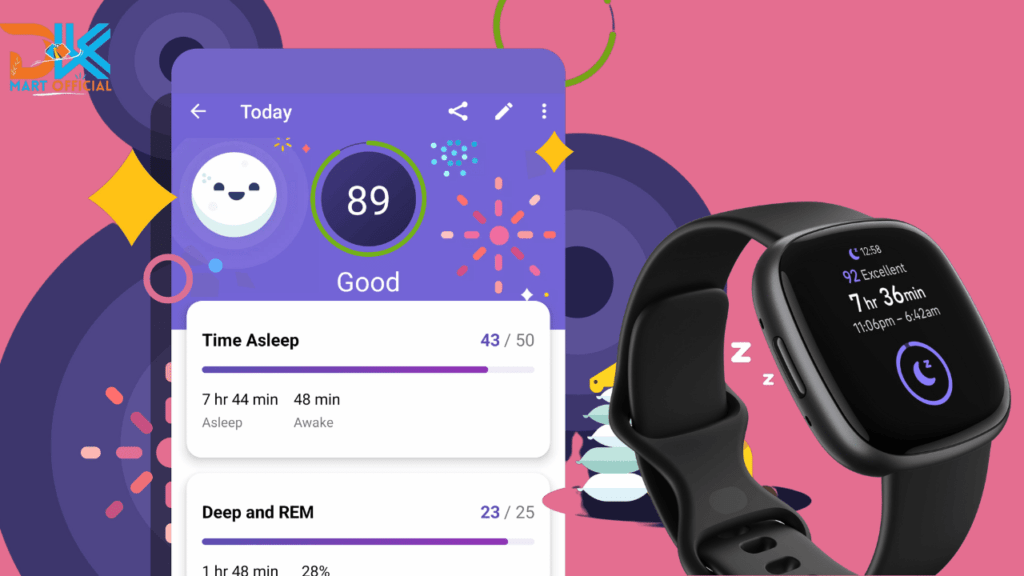
How does Fitbit Calculate Calories Burned: User Input
Fitbit, as a culmination of personalized fitness tracking, goes beyond data collection by allowing users to actively contribute critical details influencing calorie calculation. This interactive method recognizes the dynamic aspect of health, allowing users to input parameters like as food and water consumption. The recognition of nutrition’s impact on energy balance deepens Fitbit’s calorie computations, making it a more comprehensive health companion.
Fitbit enhances customization for female customers by including menstrual cycle data. Recognizing the distinct metabolic changes that occur during different stages, this function tailors the calorie burn estimate, demonstrating Fitbit’s commitment to meeting the varying demands of its users. Fitbit’s approach to user inputs goes beyond typical tracking, building an active partnership between users and their health data for a fully personalized and accurate fitness experience.
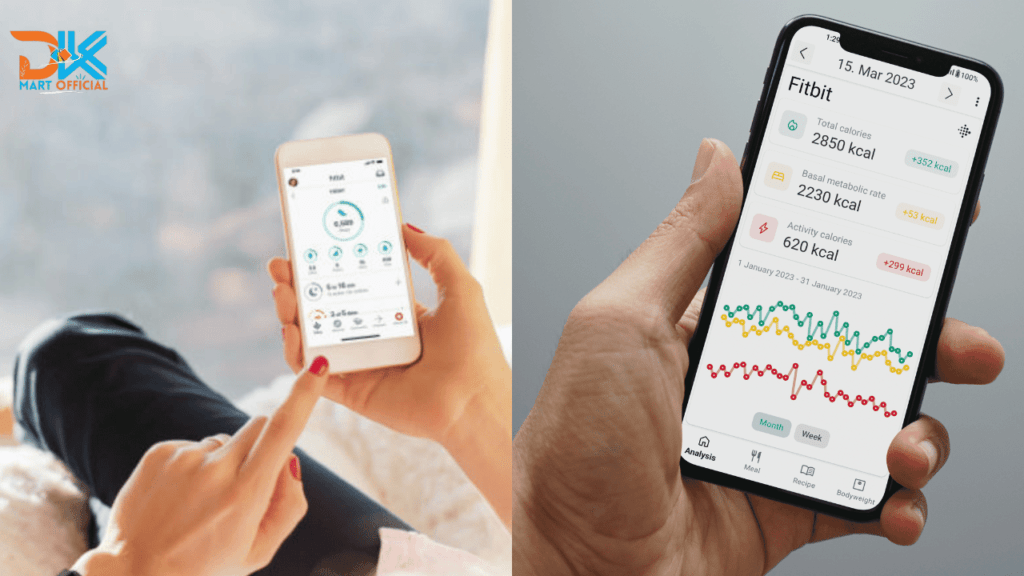
Which Fitbit watch is best for calories burned?
How does Fitbit Calculate Calories Burned: Fitbit Charge 4:
Fitbit Charge 4, a top fitness tracker, gives a detailed and individualized estimate of calorie burn by combining activity type, heart rate monitoring, and individual variables to accurately calculate energy expenditure. By continuously monitoring heart rate during various activities, the device may customize its estimation to the user’s individual physiological response.
This real-time heart rate data is critical since higher heart rates often imply a more vigorous workout, resulting in a higher calorie burn. Furthermore, the device takes into account the type of activity being performed, acknowledging that different activities have variable metabolic demands. Running, for example, burns more calories per minute than walking, and activities like swimming and cycling have different calorie burn rates depending on pace and resistance. Thus, the Fitbit Charge 4 offers a more detailed picture of calorie burn than simply counting steps.
Furthermore, the Fitbit Charge 4 considers individual variables such as age, gender, weight, and height, knowing that these aspects influence metabolic rate and energy expenditure. This personalized technique ensures that the device’s calorie burn prediction is adjusted specifically to the user, providing a more accurate depiction of their individual physiology and effort levels. While the estimation isn’t perfect and may differ from person to person, the Fitbit Charge 4’s comprehensive and tailored approach to calorie counting demonstrates the company’s commitment to giving consumers actionable data that help them achieve their fitness and wellness objectives.
How does Fitbit Calculate Calories Burned: Fitbit Versa 3:
Fitbit’s Versa 3 is a feature-rich smartwatch that provides extensive data for calorie calculations. Its built-in GPS feature allows for accurate distance and pace tracking during outdoor activities such as running, cycling, and hiking, which is important for determining calorie burn. The device also includes continuous heart rate monitoring, which provides real-time insights into workout intensity and improves calorie burn estimates. Furthermore, its extensive sleep tracking features, including REM sleep tracking and Sleep Score, allow the gadget to compute calories burned while sleeping, offering a comprehensive picture of daily energy expenditure. Because of its adaptability, the Versa 3 is an excellent choice for anyone who wants to efficiently monitor and manage their health and fitness levels.
How does Fitbit Calculate Calories Burned: Fitbit Sense:
The Fitbit Sense is a flagship smartwatch that elevates fitness monitoring with features like stress management and an EDA (electrodermal activity) sensor. These modern technologies help to a more comprehensive understanding of the elements that influence calorie burn. Stress and emotional well-being have a major impact on metabolic rate and energy consumption. The Fitbit Sense tracks stress levels using the Stress Management Score, which takes into account characteristics such as heart rate variability and sleep patterns, to provide users with insights into how stress affects their calorie burn. Furthermore, the EDA sensor, which detects changes in the electrical conductivity of the skin, can provide additional information about stress and emotional state.
How does Fitbit Calculate Calories Burned: Fitbit Inspire 2:
While the Fitbit Inspire 2 lacks some of the advanced capabilities of higher-end versions, it still provides dependable calorie tracking and is a cost-effective solution for people who are primarily concerned with fundamental fitness data. The Inspire 2 estimates calorie burn by taking into account a variety of characteristics such as activity type, heart rate, and duration. It may not have built-in GPS or continuous heart rate monitoring, but it may nevertheless provide an accurate assessment of energy expenditure during workouts and throughout the day.
The Inspire 2 is a fantastic alternative for anyone who wishes to track their total activity and calorie burn without requiring more complicated capabilities. Its simplicity and affordability make it a viable solution for people who value cost-effective fitness tracking. It’s also an excellent starting point for anyone who is new to fitness monitoring and wants to learn the fundamentals before progressing to more advanced capabilities. Overall, the Fitbit Inspire 2 is a dependable and cost-effective alternative for people who prioritize vital fitness metrics and want an easy way to track their health and wellness progress.
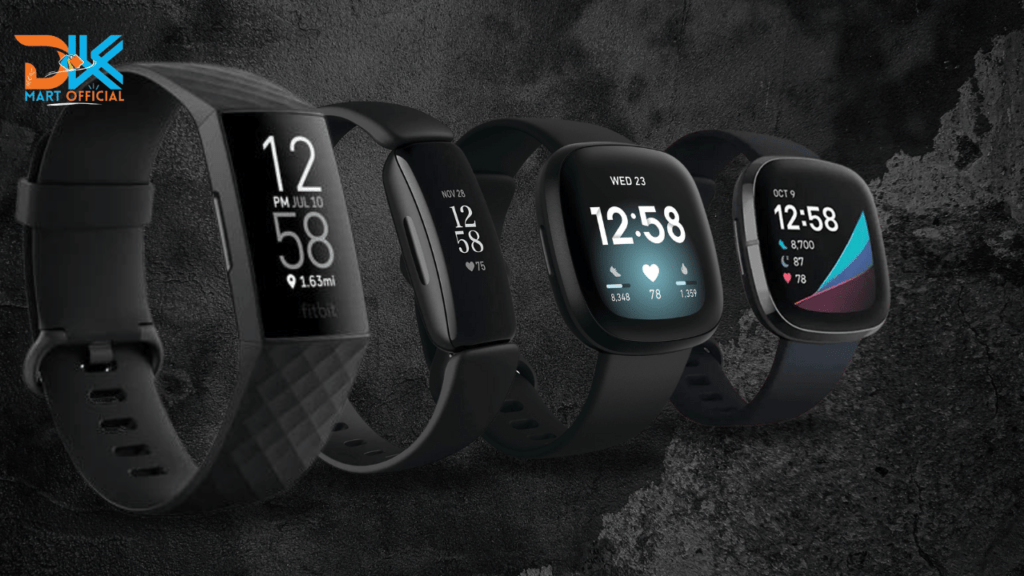
Here’s a Table Outlining The How does Fitbit Calculate Calories Burned:
| Pros | Cons |
| Heart Rate Monitoring: Fitbit uses heart rate data to provide more accurate calorie burn estimates by measuring the intensity of physical activity. | Accuracy Variability: Calorie calculation accuracy might vary depending on factors such as device positioning, user compliance, and activity type. |
| Activity Recognition: The device uses accelerometers to recognize and discriminate between different activities, which improves the accuracy of calorie estimations. | Reliance on sensors: Fitbit is primarily reliant on sensors, and inaccuracies might occur during activities involving restricted wrist movement or atypical exercises. |
| User Profiles: Fitbit uses individual information such as age, weight, height, and gender to provide individualized calorie estimates. | Limited Context: While Fitbit considers heart rate and motion, it may not take into account external factors such as ambient conditions or individual metabolic variances. |
| Sleep Tracking: Fitbit contains sleep-related data, providing a comprehensive view of daily calorie balance that includes energy expenditure during sleep. | Sleep Contribution: Although calories burned during sleeping are taken into account, they account for just a minor part of total daily expenditure. |
| Integration with nutritional data: Users can enter food and water intake, providing a detailed picture of both calorie intake and expenditure. | Dependency on user inputs: precise calorie calculation may necessitate consistent and precise user input on food intake and other variables. |
| Machine Learning Algorithms: Fitbit uses dynamic algorithms that learn from user behavior, increasing the accuracy of calorie estimates over time. | Not entirely inclusive: While Fitbit gives a complete approach, some individual aspects, such as specific medical issues, may not be fully accounted for in the calculations. |
Frequently Asked Questions
Conclusion
In this in-depth look at Fitbit’s calorie computation, we’ve revealed a symphony of scientific principles and technical innovation that makes these gadgets into must-have tool for fitness aficionados. Fitbit’s methodology goes beyond the surface, using basal metabolic rate (BMR), heart rate tracking, and sleep-related algorithms to provide a more detailed knowledge of daily energy dynamics.
Fitbit’s commitment to customization is demonstrated by its comprehensive evaluation of user input, which includes nutrition specifics and menstrual cycle data. Fitbit transforms from a simple tracker to a dynamic health companion by allowing users to actively participate, promoting an engaged partnership between consumers and their well-being.
As we end our investigation, Fitbit appears as more than just a fitness device, but also as a guide through the complex road of health and wellness. Fitbit’s combination of science, technology, and user interaction places it at the forefront, providing users with the knowledge they need to make informed decisions and embark on a tailored path to a healthier, more balanced existence.

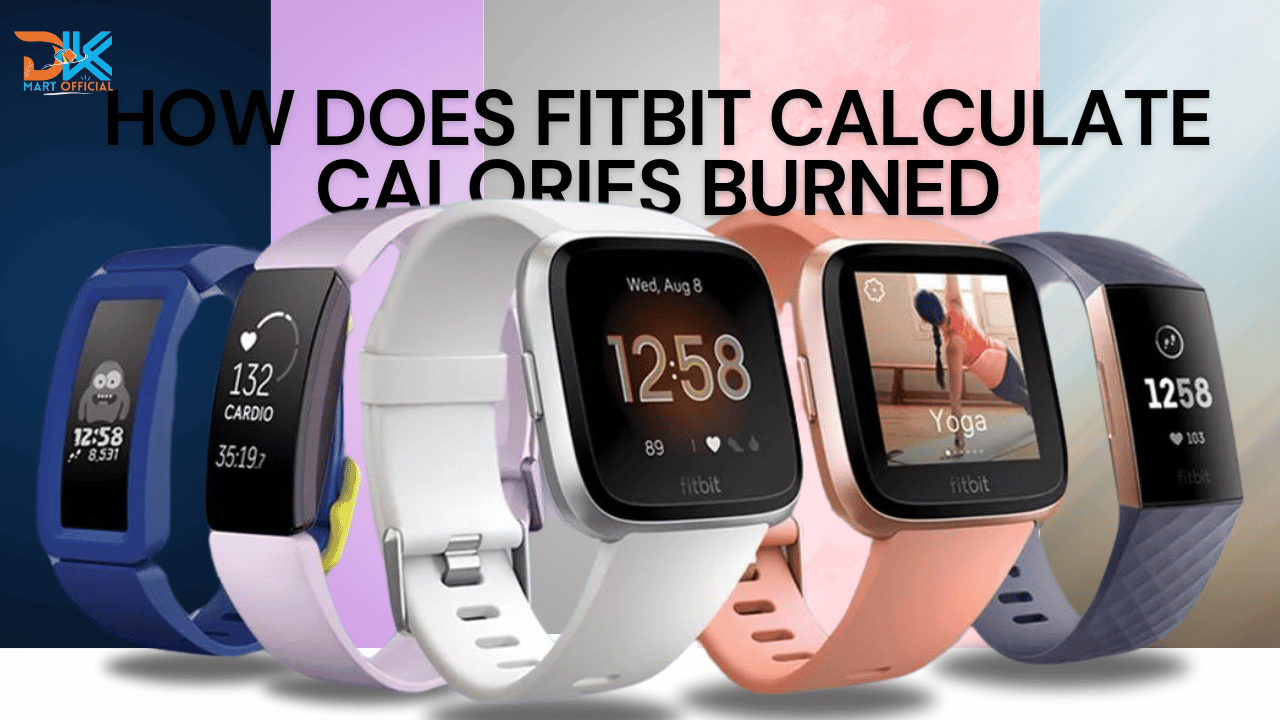
Over the last week I eagerly started following this phenomenal website, they share fabulous content with visitors. The site owner excels at educating customers. I’m excited and hope they keep up their awesome work!